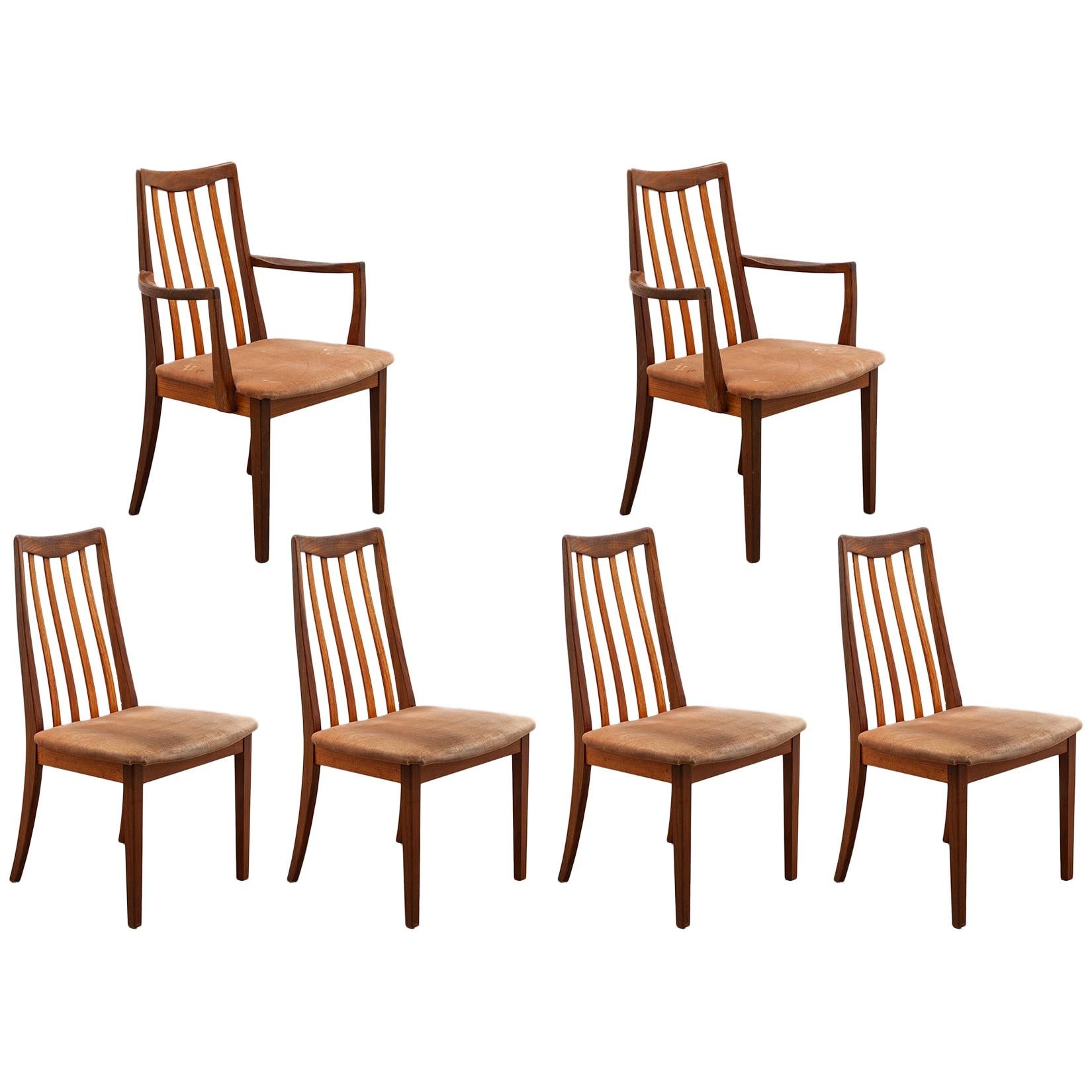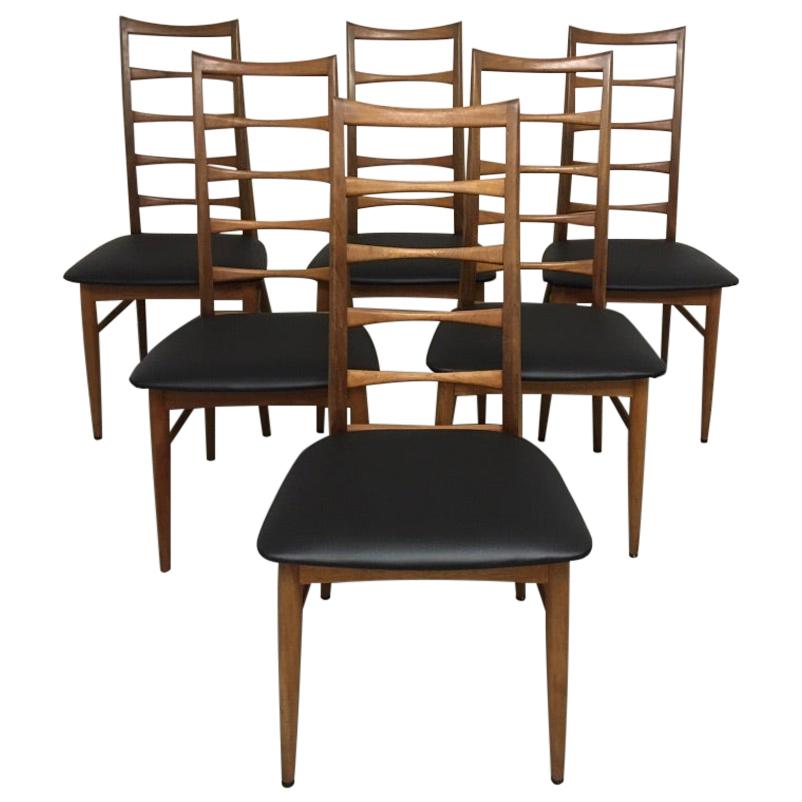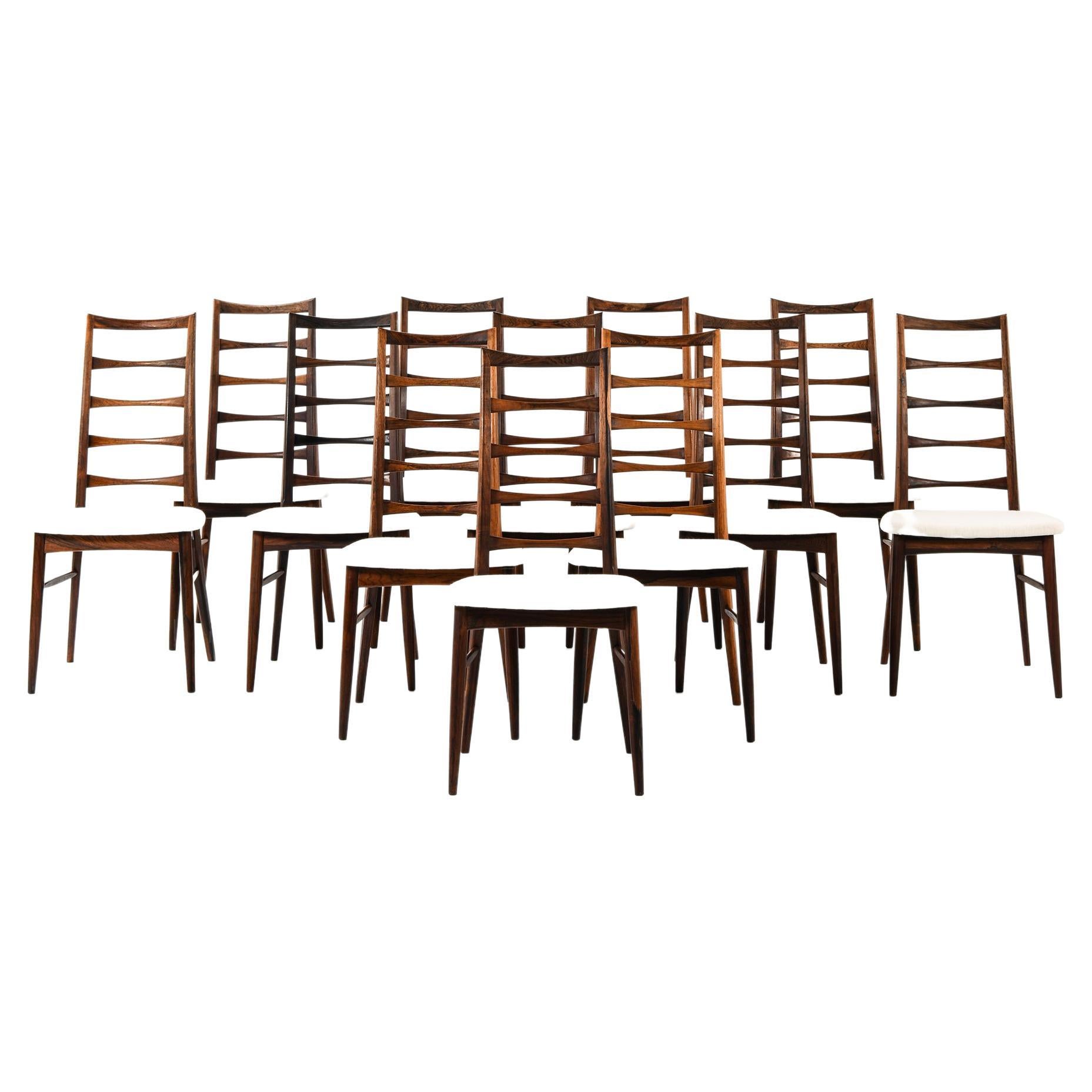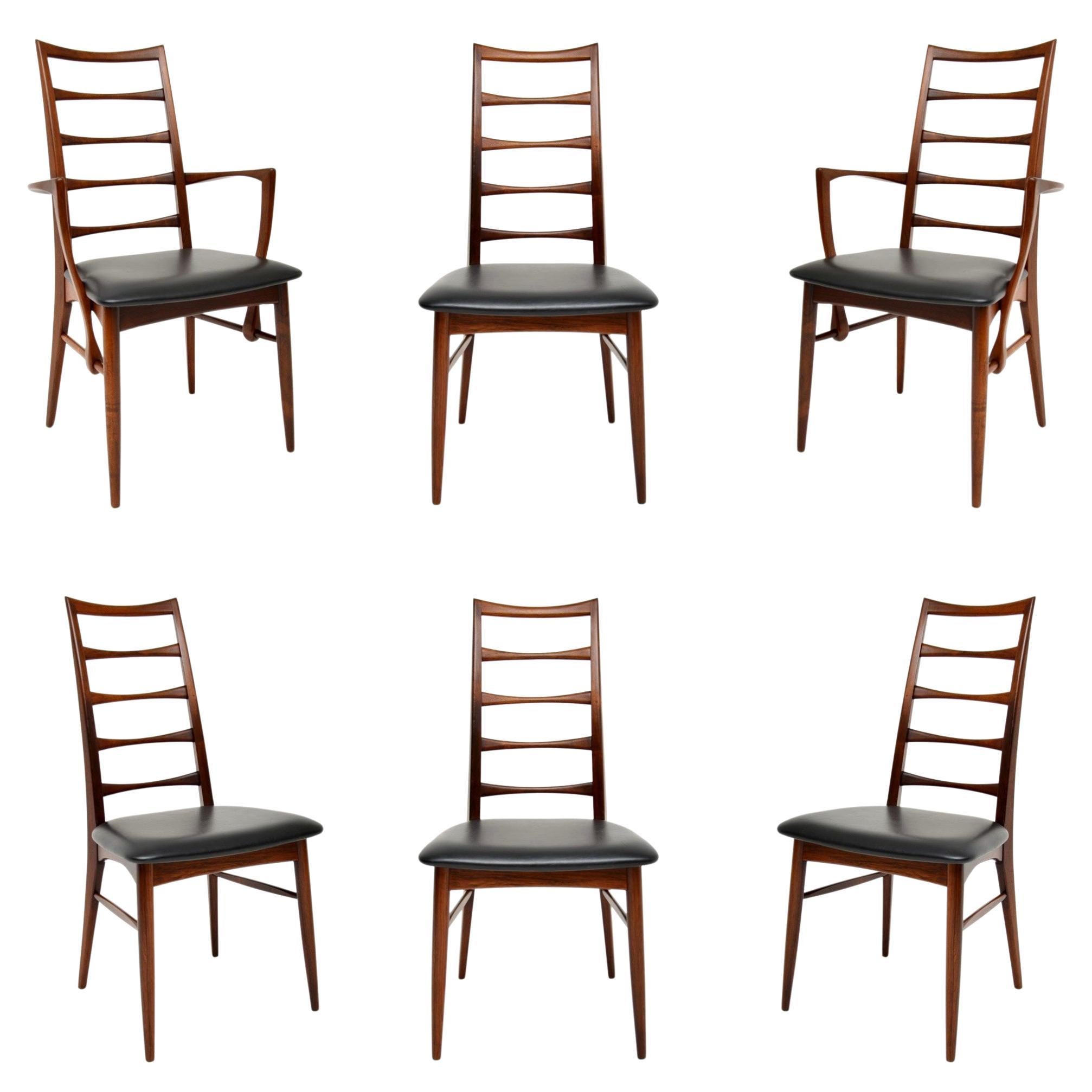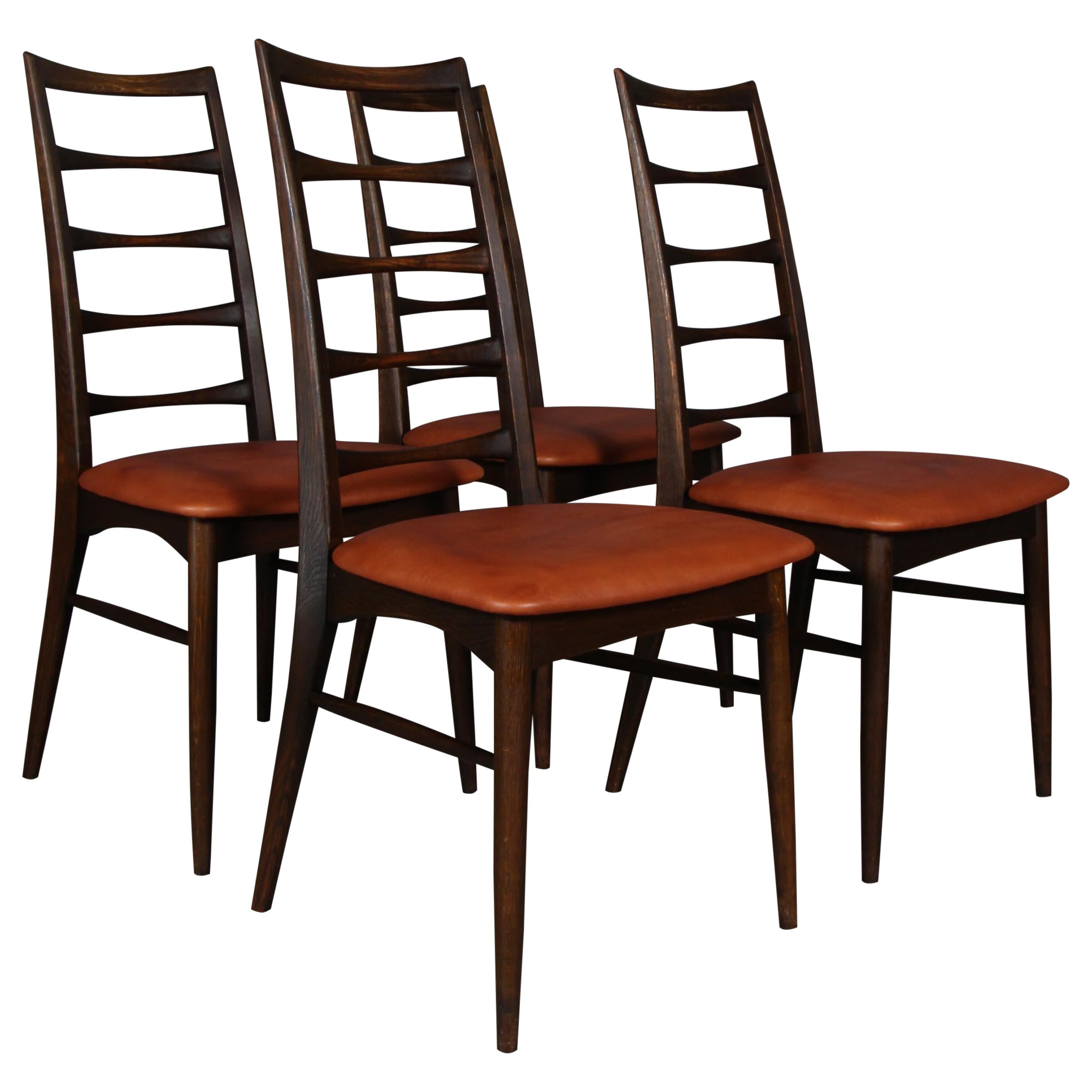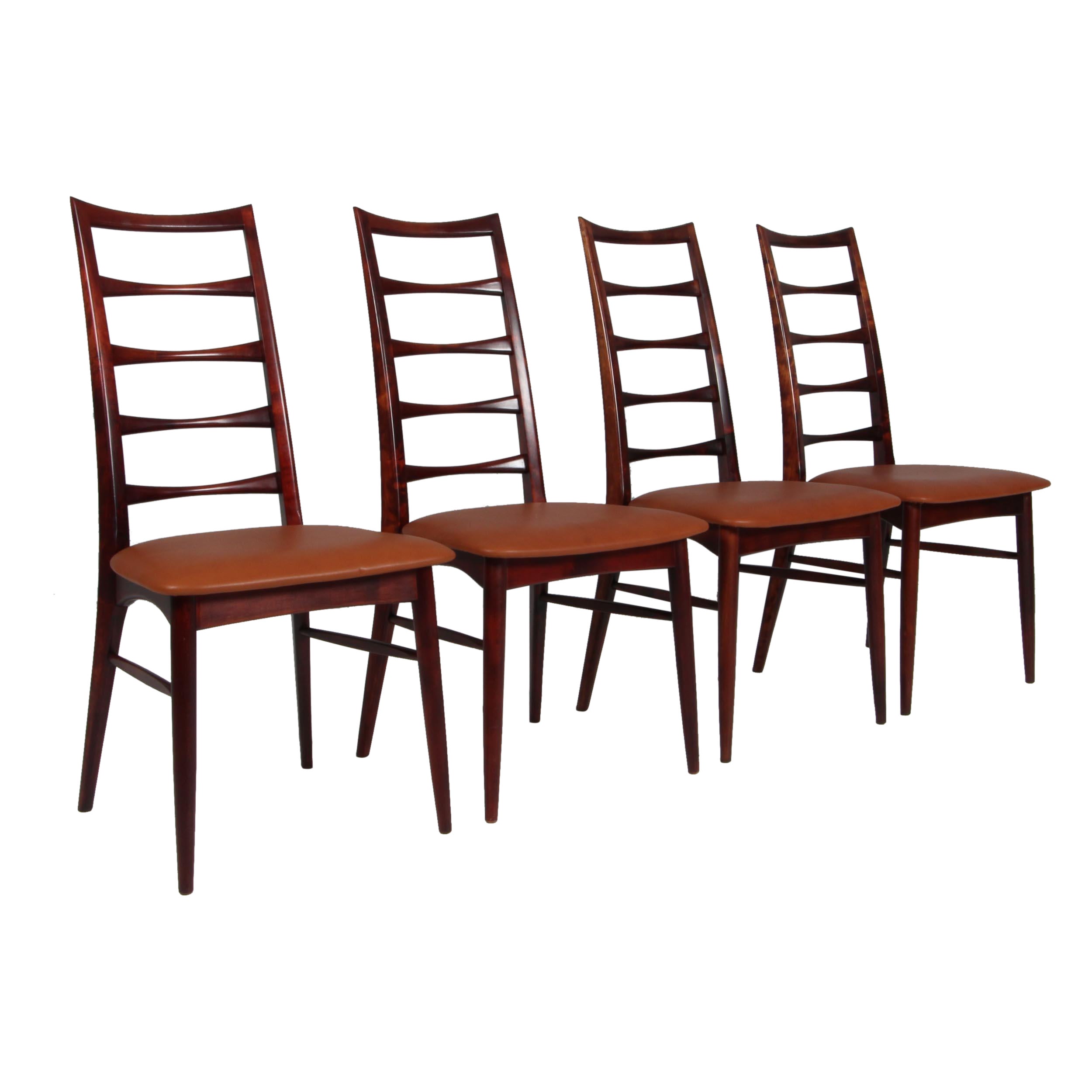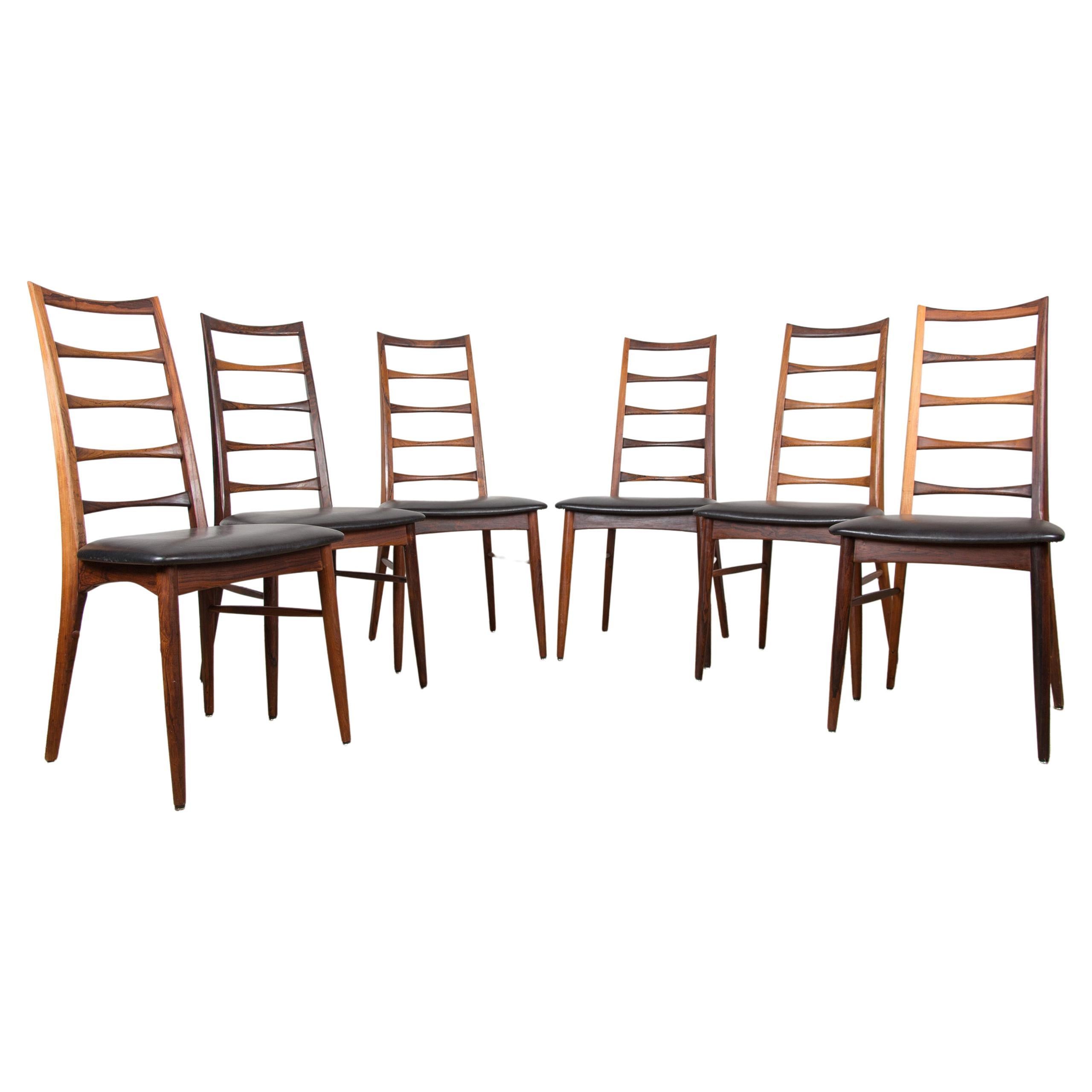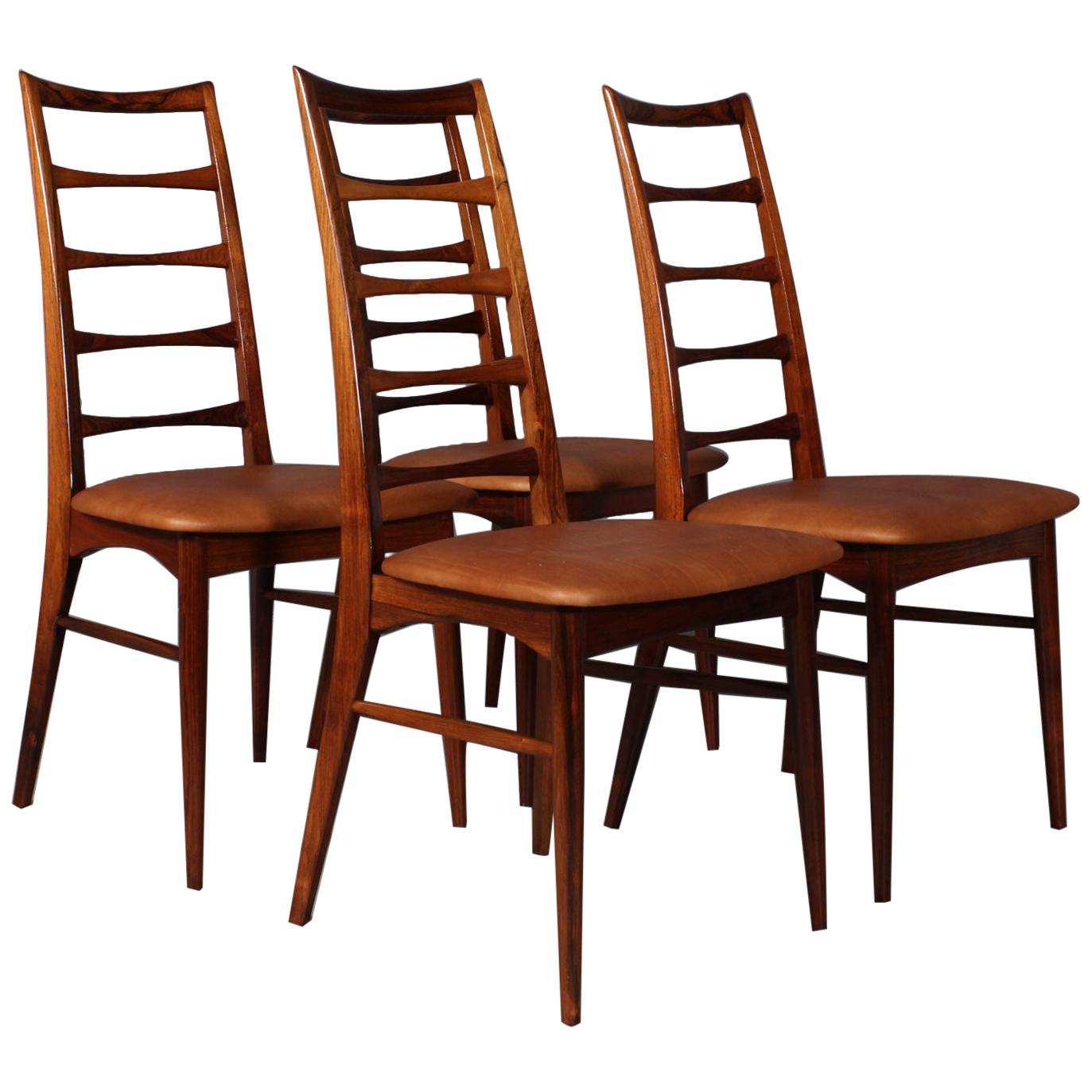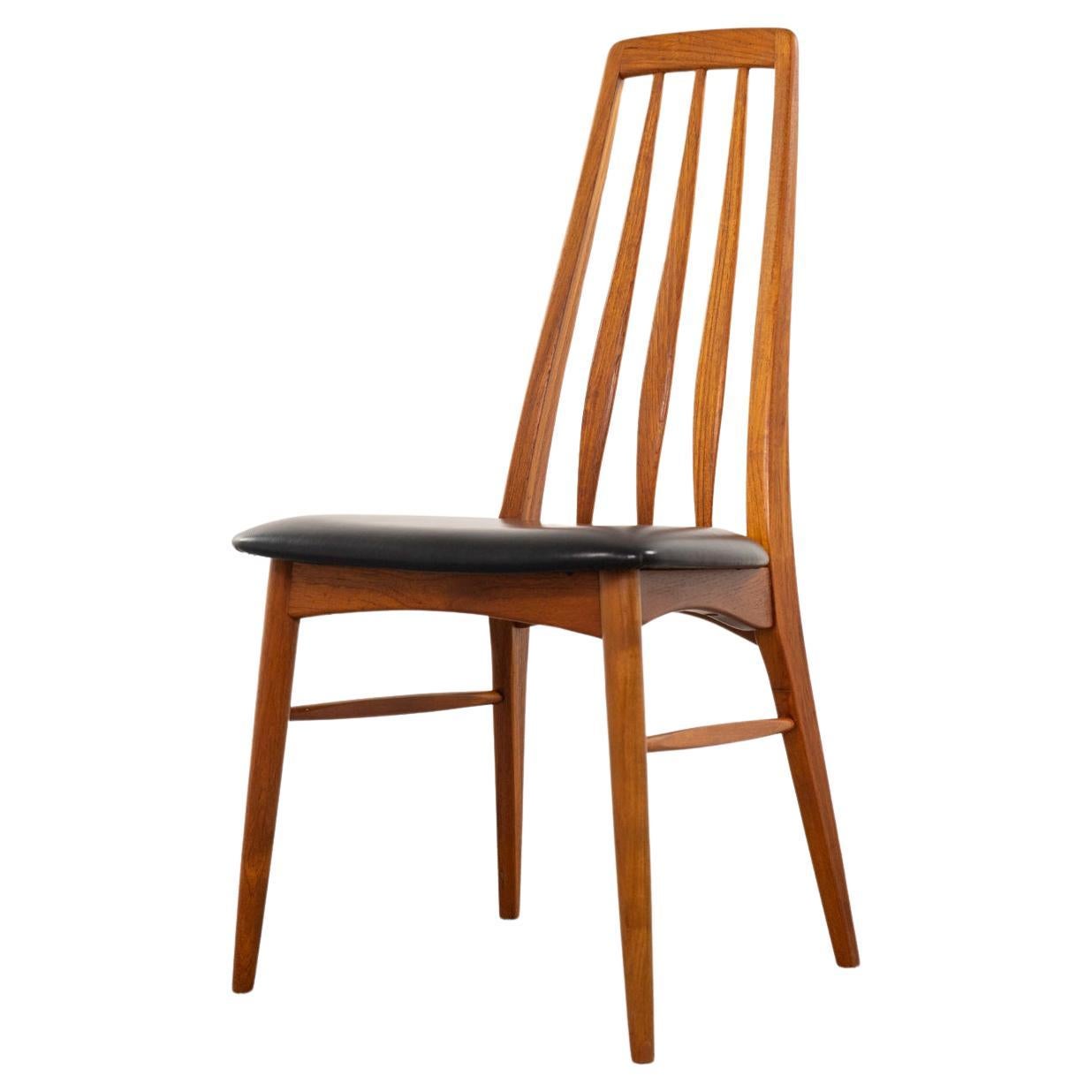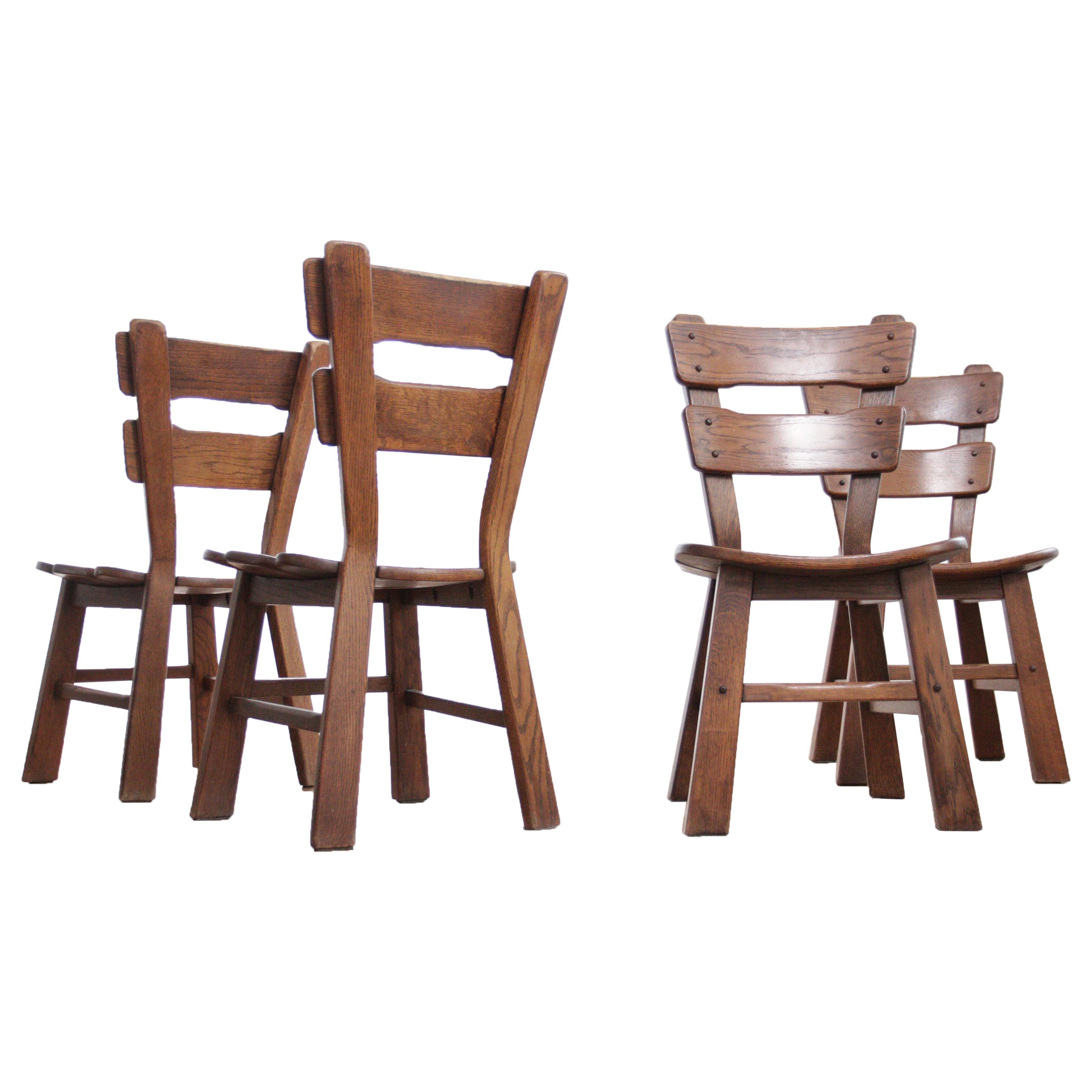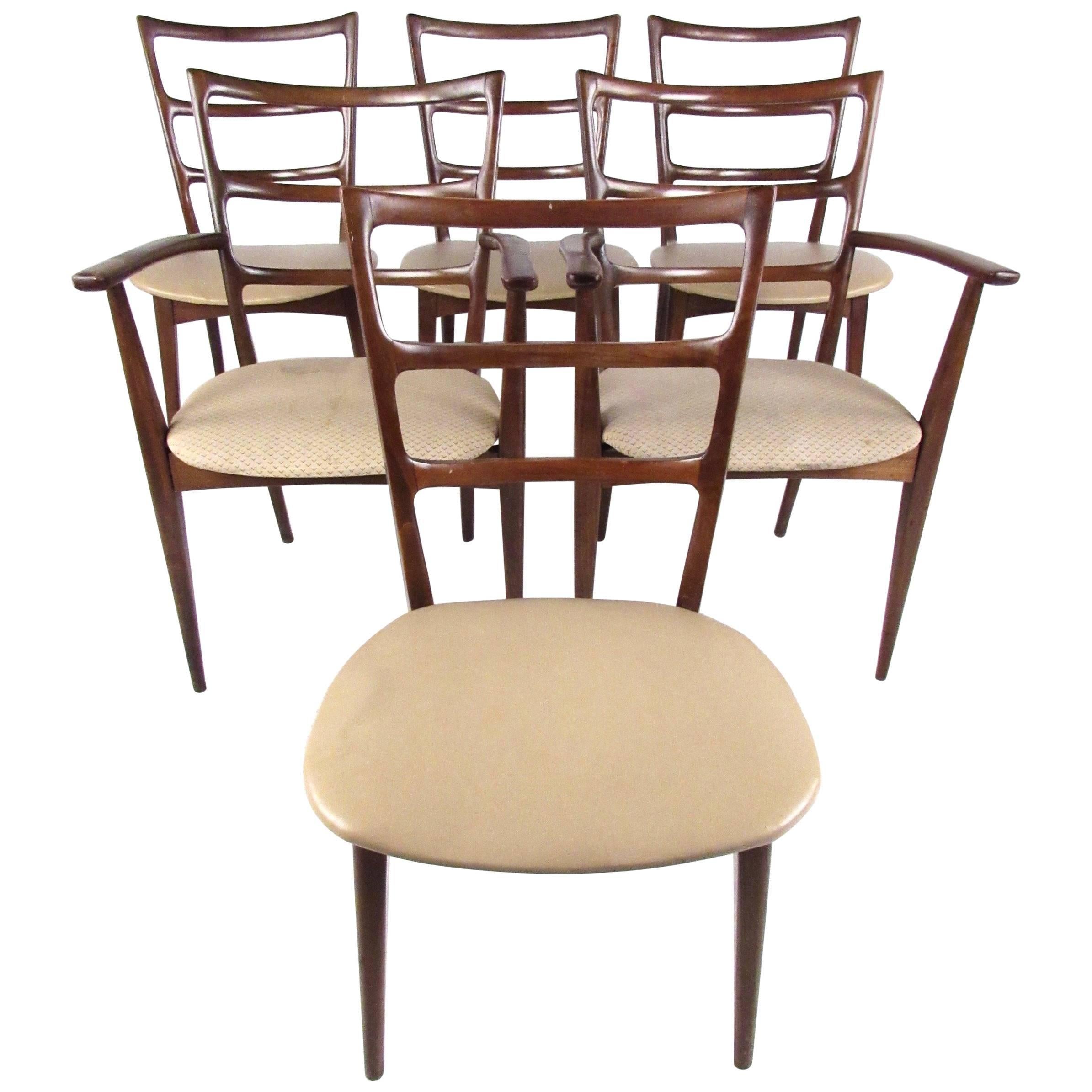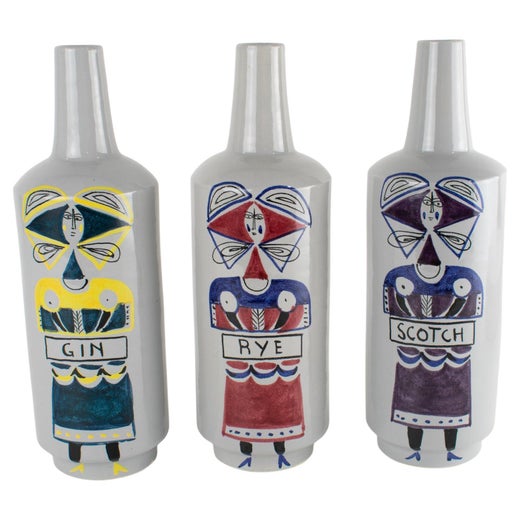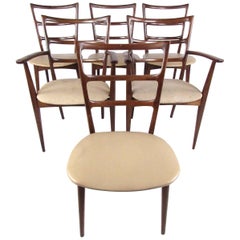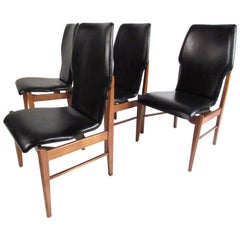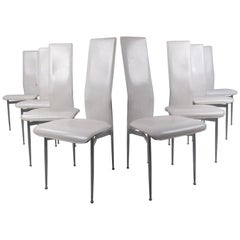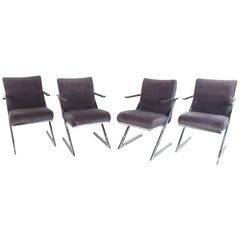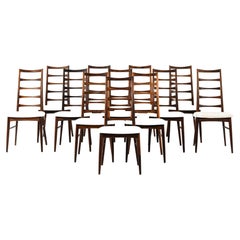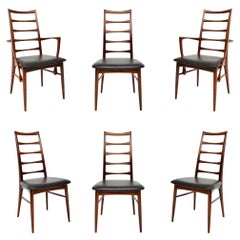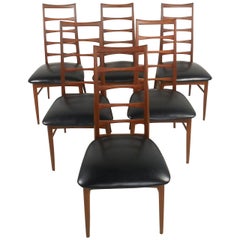
Set of Niels Kofoed Ladder Back Dining Chairs for Raymor
View Similar Items
Set of Niels Kofoed Ladder Back Dining Chairs for Raymor
About the Item
- Creator:Raymor (Manufacturer),Niels Koefoed (Designer)
- Dimensions:Height: 38 in (96.52 cm)Width: 19 in (48.26 cm)Depth: 16 in (40.64 cm)Seat Height: 17.5 in (44.45 cm)
- Sold As:Set of 6
- Style:Mid-Century Modern (Of the Period)
- Materials and Techniques:
- Place of Origin:
- Period:
- Date of Manufacture:circa 1960
- Condition:Wear consistent with age and use. Minor fading. age appropriate wear, vintage finish, some scuffs/edge wear.
- Seller Location:Brooklyn, NY
- Reference Number:Seller: 10721-8280JRc/f1stDibs: LU92182664012
Niels Koefoed
Niels Koefoed’s furniture is a demonstration of mastery through dedication. The Danish designer devoted himself to creating dining room furniture in mid-century modern and Scandinavian modern styles. Koefoed was best known for his elegant dining room chairs and exquisite dining room tables that he designed to accompany them. His use of hardwoods, like teak, rosewood and cherry, ensured that each piece retained its charm and beauty.
Koefoed was born into a family in the furniture design and manufacturing business. His father, Einar Koefoed, had opened a furniture factory in Hornslet, Denmark, in the 1920s. Hornslet was a furniture town that was home to upholstery and cabinet companies. Koefoed’s Møbelfabrik, the Koefoed family factory, specialized in fine furniture. Over the 1950s and 60s, the company became widely recognized for Niels Koefoed’s popular dining room chairs.
One of Koefoed’s first designs to receive significant attention was the 1957 Peter dining chair. The chair’s appeal lay in its refreshingly light and minimalistic style, with a comfortable curved back and leather seat. Koefoed reportedly named the chair after his son.
In 1964, Koefoed created his most iconic design: the Eva dining chair, named for one of his daughters. He described the tall and graceful chair as feminine, with full hips and narrow shoulders. The chair continues to be in high demand today. It was part of a series of dining chairs named after important women in Koefoed’s life, the other two being the Ingrid chair, also named for a daughter, and the Lis chair. Together, the chairs were known as the “three lovely girls.”
In 2004, Koefoed’s Møbelfabrik relocated to Thailand and continued manufacturing furniture. However, many of the company’s classic mid-century designs, including the Peter and Eva chairs, are today reproduced by the Danish company CASØ Furniture.
On 1stDibs, find vintage Niels Koefoed seating, tables and more.
Raymor
Few had their finger on the pulse of American furniture like importer and distributor Raymor. Founder Irving Richards first had his eyes opened to the world of furniture while attending the 1928 Salon d’Automne art and design fair in Paris. He joined Lightolier two years later and developed its business relationships, including with designer Russel Wright.
Wright and Richards met in 1935 and Russel Wright, Inc. was formed in 1936. Its American Modern ceramic tableware, produced under the name Wright Accessories in 1938, was a notably lucrative collaboration. Following the early success of American Modern, Richards obtained the majority share of Wright Accessories and changed its name to Raymor Mfg Division Inc. in 1941.
By 1952, the exclusivity over American Modern had ended (the line was initially produced by Wright Associates and later manufactured by Steubenville for two decades). To keep up with American markets, Raymor worked with prominent designers such as George Nelson, Arthur Umanoff, Ray and Charles Eames, and Hans J. Wegner.
The company’s imports expanded to Denmark, which contributed to the rise of Scandinavian modern designs in the American market. Throughout the 1950s, Richards established relationships with factories in Scandinavia, Italy and Germany, as well as with the influential tastemaker and importer Charles Stendig.
The furniture company Simmons bought Raymor in 1963 and changed its name to Raymor Richards, Morgenthau Inc. in 1969. During that time, Raymor’s Omnibus range of Scandinavian-style wall units became widely popular, along with Italian glass and pottery like Bitossi ceramics designed by Aldo Londi and Bagni ceramics by Alvino Bagni.
Shifting styles coupled with rising competition, and the departure of Richards from the company, ended Raymor. By the late 1970s, Raymor faced a wave of international factories able to produce similar products of lesser quality for a lower cost. Buyers were eager to frequently change their interior styles, limiting the need for high-end, durable furniture, which Raymor had been importing.
On 1stDibs, find a collection of vintage Raymor ceramics, lamps, decorative objects and more.
More From This Seller
View AllMid-20th Century Polish Mid-Century Modern Dining Room Chairs
Fabric, Wood, Upholstery, Hardwood, Beech
Vintage 1960s American Mid-Century Modern Dining Room Chairs
Wood
Vintage 1970s Mid-Century Modern Dining Room Chairs
Metal
Vintage 1960s American Mid-Century Modern Dining Room Chairs
Chrome
20th Century Mid-Century Modern Chairs
Leather
Mid-20th Century Mid-Century Modern Chairs
Walnut
You May Also Like
Vintage 1960s Danish Scandinavian Modern Dining Room Chairs
Velvet, Wood
Vintage 1960s Danish Dining Room Chairs
Faux Leather, Teak
20th Century Danish Scandinavian Modern Dining Room Chairs
Rosewood, Wool
Mid-20th Century Danish Mid-Century Modern Dining Room Chairs
Wood, Faux Leather
Vintage 1960s Danish Scandinavian Modern Dining Room Chairs
Oak, Leather
Vintage 1960s Danish Scandinavian Modern Dining Room Chairs
Leather, Rosewood
